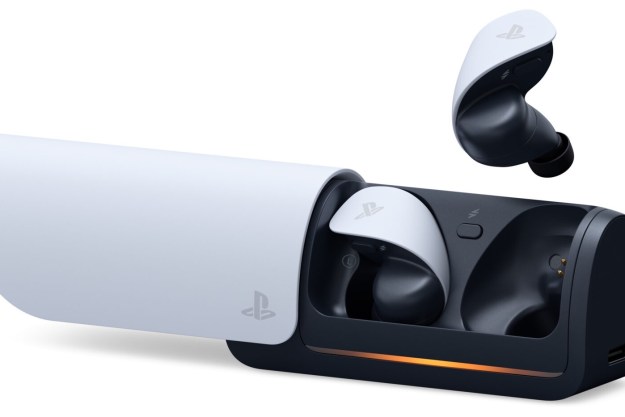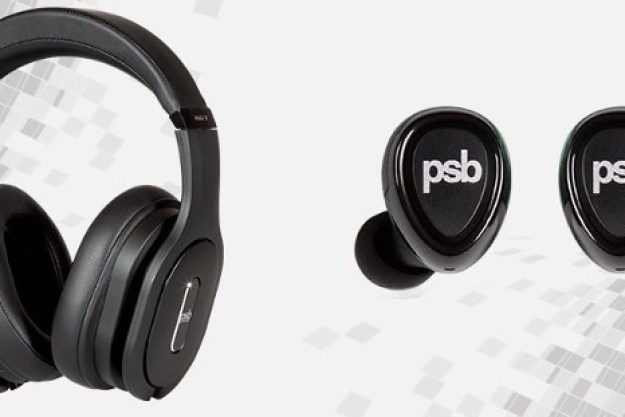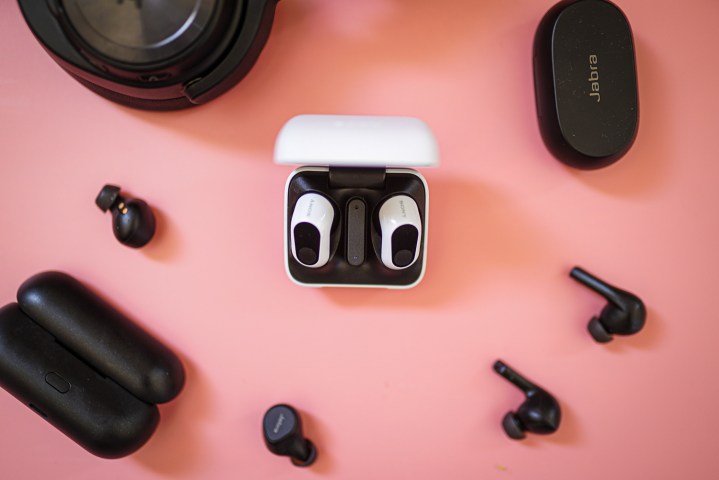
I’ve struggled to find an audio solution that works for PC gaming. Over-ear headphones, even premium ones like the SteelSeries Arctis Nova Pros, irritate my ears by pressing into my glasses. And earbuds, almost regardless of brand, either lack the features I want out of a premium audio experience or come with horrendous Bluetooth lag. The new Sony InZone Buds have finally solved my problem.
They’re a set of
Why the InZone Buds are special

Let me back up, though. After giving up on the Arctis Nova Pros, I bought a pair of Jabra Elite 7 Pros. These earbuds are fantastic, as you can read in our Jabra Elite 7 Pro review. It’s one of only a handful of products that have ever received a perfect score from Digital Trends. High praise.
They’re great, and have been a constant companion for gaming, listening to music, and traveling. The only downside, and it’s a big one, is Bluetooth. The lag is so bad that YouTube videos are out of sync, and there’s an off-putting delay when playing games. To be clear, this is a PC issue, as the experience with my Samsung Galaxy S22+ is just fine.
Still, I dealt with it. I learned the delay and anticipated it, building it into muscle memory like I would using a new gaming keyboard. It was like a revelation plugging in the InZone Buds and coming back to perfectly synced audio.
The earbuds support both Bluetooth and a 2.4GHz connection through an included USB-C dongle. This dongle has a switch on it for PC or PlayStation 5, and in both situations, the delay is so small that it may as well not exist.
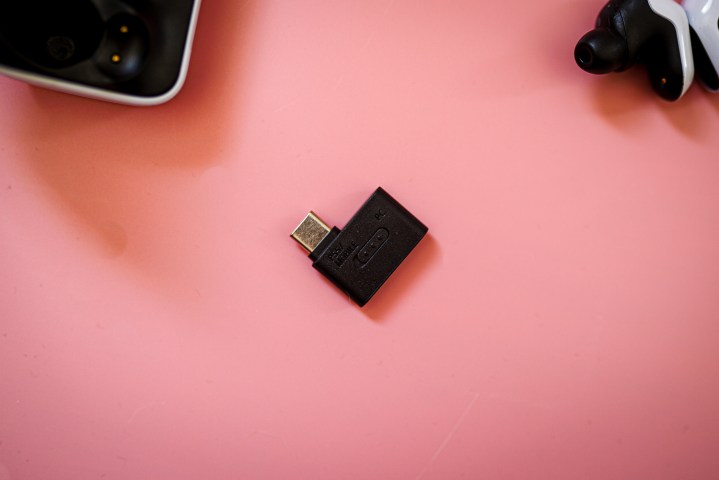
The lack of latency is why the InZone Buds are good for gaming. That’s not the reason I recommend them, though. It’s the combination of Sony’s exceptional sound quality and world-class active noise cancellation (ANC). The InZone Buds don’t just bring Sony’s general expertise with
There are other products that do some of what the InZone Buds do, but nothing that does it all. It’s a combination of great sound quality, ANC, and low latency that makes them the only pair of true wireless “gaming” earbuds to get excited about.
World-class ANC
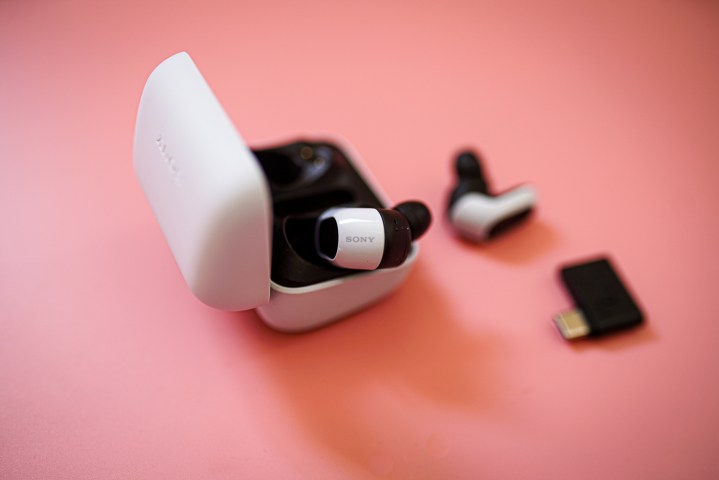
The biggest selling point for me is the ANC, which is some of the best I’ve heard (haven’t heard?). It sounds natural, and that’s the biggest hurdle for ANC in earbuds. With my Jabras, I had to swap in a larger tip to get that enclosed sound field that ANC is known for. It works great, but it led to a situation where I could feel every move of my mouth translate up into my ears. No fun.
The InZone Buds don’t have that problem. It’s not a perfect seal like the Jabras offer, but the ANC still works exceptionally well to block out ambient noise. Unlike the Razer Hammerhead Pros, which also have ANC, the battery life isn’t terrible on the Sonys, either. I’ve used them for nearly two weeks for 10-12 hours a day with ANC on, only briefly popping them in the case for a stretch or overnight, and they’ve never been close to dying.
A big part of ANC is an ambient sound mode, which is another area the InZone Buds excels. A single tap on the left earbud cycles through the sound modes, including one that lets ambient sound in. It’s the most natural I’ve heard, across my Jabras, the Arctis Nova Pros, and even Sony’s over-ear WH-1000XM4s. The morning I wrote this piece, I actually got in my car to grab a coffee with the earbuds on, only realizing they were still in after I had turned on the ignition. Don’t worry, I returned them to their case before taking off.
Half of the reason I forgot they were in was the ambient sound mode. The other half was comfort, which is another area where the InZone Buds stand out. They’re remarkably light at about 5.6 grams a piece, which is a fraction of a gram heavier than the Jabra Elite 7 Pro and a touch lighter than the Sony WF-1000XM5. Unlike Sony’s previous designs in mainstream earbuds, the InZone Buds don’t focus all of that weight on your ear canal, instead spreading it out with a thin strip that runs down the side. I’ve used them for eight hours straight without any issues, and I can’t say that about most earbuds.
Tuned for gaming

There’s a trade-off with comfort in sound quality, though. The InZone Buds sound great, but they lack that cranium-shaking bass that some earbuds can deliver. Bass is present but not bombastic. I found myself going to an EQ for mixes that are less heavy on bass to fill out the sound. The InZone Buds never delivered what I’ve come to expect with something like the Jabras for low-end, but with a little tweaking, they can get close.
Thankfully, the InZone Buds sound great elsewhere. The high-end is very present without getting harsh; a tough balance for even the most luxury earbuds. The mids are clear, as well, with clear dips in the lower and upper regions to keep the earbuds from sounding muddy. The InZone Buds don’t have the mid “scoop” that some cheaper earbuds have, instead making what sounds like surgical cuts to make music, games, and movies sound clearer in the midrange.
Still, it’s clear the earbuds are tuned for gaming. Cuts in the midrange and a focus on high-end fidelity over bass is clearly built to help with your awareness in games. That trade-off means music doesn’t sound as good. You can still listen to music — I’m having no issues on that front — but you’ll likely need to resort to an EQ to get everything sounding how you like.
The InZone Hub
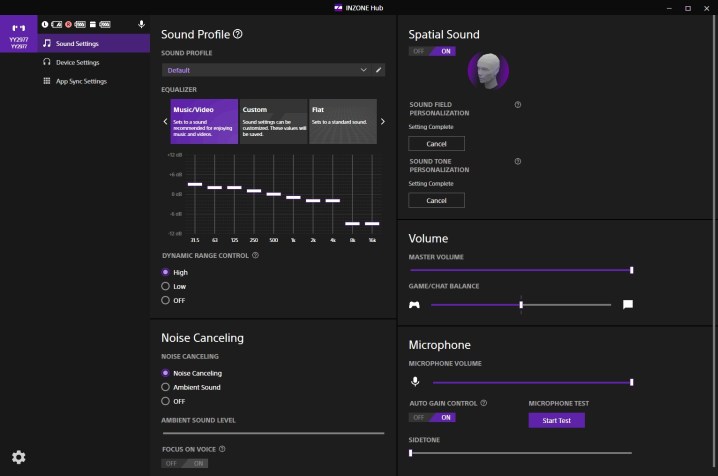
Thankfully, Sony gives you access to an EQ through the InZone Hub. This utility is an essential companion for the InZone Buds, allowing you to customize the earbuds’ functionality and sound profile. For EQ, Sony sets you up with a Bass Boost and Music/Video preset, as well as a custom preset. Unfortunately, you’re only able to customize that single custom preset, so you can’t set up multiple EQs and quickly swap between them. The upside is that the InZone Hub applies this EQ to the earbuds, even when you don’t have the software open.
Still, this EQ isn’t very powerful. Sony includes 10 bands with a range of 24 decibels (+12dB to -12dB), but there’s no way those numbers are accurate. I could push the sliders to both extremes and only hear a minor difference in the overall sound profile. I ended up ditching the built-in EQ for SteelSeries Sonar, which offers a lot more flexibility. I need to keep Sonar running in order for the EQ to apply, but it’s a better solution than Sony’s built-in EQ.
Elsewhere, the InZone Hub is more useful. For starters, it creates two virtual channels in Windows, allowing you to separately route your game and chat audio and adjust the balance between them. You don’t need to go into InZone Hub to control the balance, either. You can configure the earbuds to adjust the game and chat volumes by tapping them.
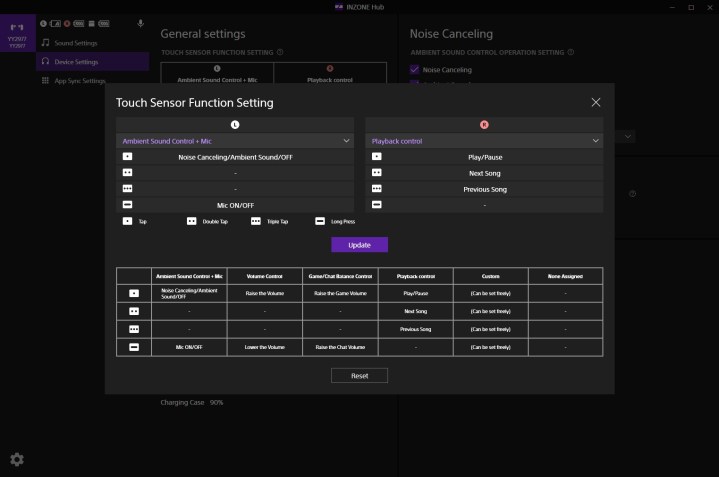
Each earbud supports single, double, and triple taps, as well as a long press, each of which you can assign a command. Sony includes some categories — you can assign the left earbud to ambient sound control and the right to playback controls, for example — but you can also configure custom profiles on each.
Sony brought some of its mainstream tech into InZone Hub, as well. You can use the app to measure your ears with a picture, creating a custom profile for the
The InZone Hub gets even more powerful when you bring in profiles. You can create profiles that save all of your settings, as well as export them for use with other systems. Furthermore, you can sync the profiles with applications, and InZone Hub will automatically swap your profile when that app is in the foreground.
A standout pair of earbuds

It seems like every week there’s a new peripheral from a gaming brand (you know the ones) that promises to completely change how you play games. The vast majority of these peripherals don’t do much, usually just riding a trend that will surely die out in a few years. The InZone Buds are different.
They bring some much-needed expertise to the world of true wireless gaming earbuds. Brands like Razer, HyperX, and Asus have all tried their hand at
The InZone Buds are available for preorder now for $200, both in white as you can see pictured throughout this article, and black. There are cheaper options, Asus’ ROG Cetras being the standout for $100. But if you want a premium true wireless experience for gaming, the InZone Buds are the way to go.
Editors' Recommendations
- I want to love Asus’ gaming earbuds, but there are problems
- Hyte made me fall in love with my gaming PC all over again
- Qualcomm just made some bold claims about gaming on ARM PCs
- HyperX just made your next favorite gaming keyboard
- Sony’s acquisition of Audeze is a little baffling


